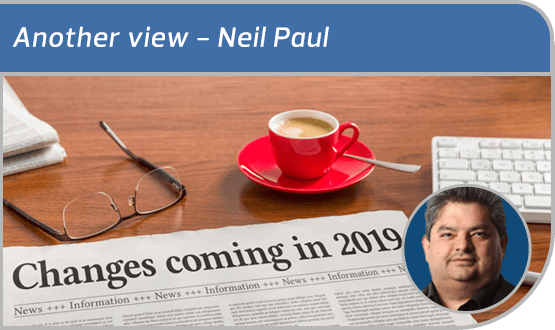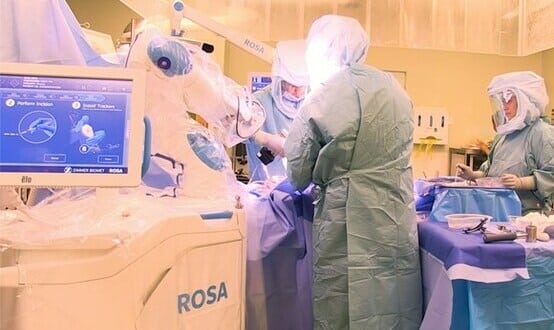Another View: On whether a GP-contract-driven change is going to come
- 12 March 2019

Our GP columnist has been reviewing the 2019/20 GP contract document. And while there’s lots of talk of digital, Neil Paul is not quite convinced it’s enough to constitute a real change.
The 2019 GP contract document is now out. It gives some more details about the new Directed Enhanced Service (DES) network that I talked about last month, and it also talks more generally about the ambition for IT for primary care.
Many would see it as a visionary document describing a new future for primary care. A more joined-up accountable and countable primary care, more integrated with other NHS providers. It embeds data sharing into the contract; it talks of giving 111 rights to access appointment slots; and it pushes the online agenda.
Some would say it’s the death of general practice as we know it, of practices that are independent, small, local and individualistic and conservative.
Personally I find it a document clearly written by committee, and contradictory in places.
A push for integration
Interestingly despite the charge the government is trying to privatise the NHS, I don’t think online private GP/IT companies do well out of this contract. There are several clauses which appear aimed directly at them.
That includes cutting funding for patients registered with a London practice but not living in London, cutting the out of area registration fees – the contract explicitly states this allowance wasn’t aimed at digital practices – and reducing payments for taking on new patients, presumably to shift focus from luring patients onto existing ones.
I think the bigger push from the document is more to a joined-up health system paving the way for integrated care providers.
The contract talks about joining up urgent care, by which it seems to mean extended hours access to GPs. Locally we are running this at a GP federation level and delegate a lot of the work back to practices. This has entailed using EMIS Remote Consultations and numerous sharing agreements. We also have a local primary care DVT (deep vein thrombosis) service and this needed data sharing agreements too.
The new contract seems to say that, by signing it, you agree to share data with appropriate people. Perhaps this will mean users have more of a right to use shared data, negating the need for another signed document.
Concerns and potential controversies
Putting most appointments online and allowing some/all of them to be booked directly by 111 is a recipe for disaster. Not all doctors are the same and our appointment systems are not sophisticated enough. I don’t want 111 or patients booking in with me for smear tests when our nurses do them.
The contract pushes the role of non-GPs. If we hire a load of advanced nurse practitioners to see ill children, then I don’t want 111 booking them into a joint injection surgery. Only the other day I had a patient come in to see me with a leg ulcer who’d booked online. In my practice our nurses deal with those and it wasted an appointment and his time as no nurses was immediately free and he had to come back.
The contract talks about publishing activity data, which might be a controversial one. Locally we are already looking at this using Apex from Edenbridge Healthcare, which has been working on this for years now. But what we have found is it’s a nightmare – no two practices appear to record their appointments in the same way.
A lot of practices do a lot of activity that isn’t recorded. Directly comparing practice activity isn’t easy. You have to work on it in a gentle way, encouraging people to code the same way, highlighting to outliers that their recording of data might be to blame and allowing them to correct it, and changing the ways clinicians work. I worry that a blunt data extraction and publication of league tables will be very misleading and generate a lot of conflict.
The contract has the grand ambitions of supporting earlier cancer diagnosis and improving cardiovascular disease prevention and diagnosis. This will include changes to QOF (the Quality and Outcome Framework) but also audits to reduce variation, and decision support aids. Clinicians can expect more pop ups. IT systems such as iPLATO and PatientChase are already heavily involved in call/recall systems. I can only see an increased role for such tools to chase reluctant attenders.
The document also talks about a new network dashboard in 2020. That will include indicators on population health, prevention, urgent care and anticipatory care as well as prescribing and hospital use. Whether this will produce as much stress as the four hour A&E target will be interesting, and there is a stated expectation to add primary care.
A fair bit of hot air
The contract has a whole section devoted to digital first – a lot of which I’d argue is hot air.
It initially talks about NHS England continuing to resource IT infrastructure but doesn’t really say it’s going to give me better kit or more reliable connections. Then it talks about the IT Futures framework taking over from GPSoC (GP Systems of Choice). Again, it says very little but I’ve heard speculation this is code for replacing existing GP systems with a new NHS system.
It then talks about predictive risk tools. These already exist. To my mind, the problem isn’t that we lack tools. It’s that they don’t deliver what we need from them – namely helping me find patients who are pre-ill and enabling me to intervene early. Too often they find the ill ones you already know about.
It then harps on about the right to online and video consultations. Not 100% sure what the difference is, and to be honest I’m not really sure what advantage video gives over the phone. My belief is leave it to the market: once the demand/need/use case is there we will embrace it, just like we have embraced other technology when useful.
It also promises patients online access to their full record, including the ability to add data. Frankly we are almost there now so this is nothing new. Nor is the ambition for practices to offer electronic prescriptions and electronic repeat dispensing.
In fact, this makes me laugh as we are already on a huge drive to do this. But we are being inhibited by patients who don’t want to interact with us by app, the fact that the powers that be keep making drugs controlled so they can’t go electronically, and repeat dispensing that doesn’t work. We’ve had two pharmacists and the local pharmacies all beavering away on it but it still doesn’t work. So while I think the Electronic Prescription Service is great, but it needs improving in some fundamental ways.
In praise of the humble fax
Access to online correspondence, on the other hand, is a great idea. Even just being able to know a letter has arrived might save hundreds of appointments.
The document then goes on the confirm the NHS’s hatred of fax machines. I kind of get the idea to get rid of paper, but a fax machine is a simple, easy-to-use device and I’m not sure the alternatives are as easy.
Case in point: the other evening we were doing extended hours. One of my colleagues wanted advice on whether to admit a young man. She wanted to send an ECG to the A&E for their opinion. It was on paper. The secretaries had gone home. Only a few machines in the practice have scanners connected to them. Turning on one of those machines, finding the right software which we hadn’t been trained to use, saving it, then sending it to her email to email it to the A&E was going to take ages. Luckily, we had a fax machine and knew the number of the A&E department – though they are getting rid of theirs. What we need is a scanner to email machine.
My overall conclusion, then? It’s a mixed document. It continues the existing direction of travel, but I’m not really sure it offers anything radically new.





4 Comments
Good summary. Problem is that the contract has been driven too much by the policy imperative “what we wish would work”, rather than the pragmatic view “Let’s find evidence of what does work.” The policy errors will simply waste money, like your patients booking themselves into the wrong appointment. Meanwhile, we’re busy trying to hone what actually does work for GPs as well as patients.
Most larger printers offer a scan to email function these days! Have done for several years.
do you mean scanners? or photocopiers? I’ve never found a printer that scans? remember primary care IT is bought by CSU for practices. they tend to bu the cheapest of the cheap last years out of date model and replace it every 5 years. the printers in my surgery are grey with age… part of my point is – its okay to just say lets get rid of FAXes but unless someone tells the CSU we need an alternative and puts it in place and makes the use of it as easy..as a fax.. its not going to work!
As a money saving exercise, my Trust has replaced most of the small standalone printers with mulifunction Richoh photocopier / scanner /printers (and to enforce it, won’t fund toner for other printers). Probably cost an arm and a leg to buy and take up a lot of space – so not suitable for GPs. I’d guess most people here now have to walk about 20 metres to pick up prints rather than 10 – but again too far for GPs.
Comments are closed.